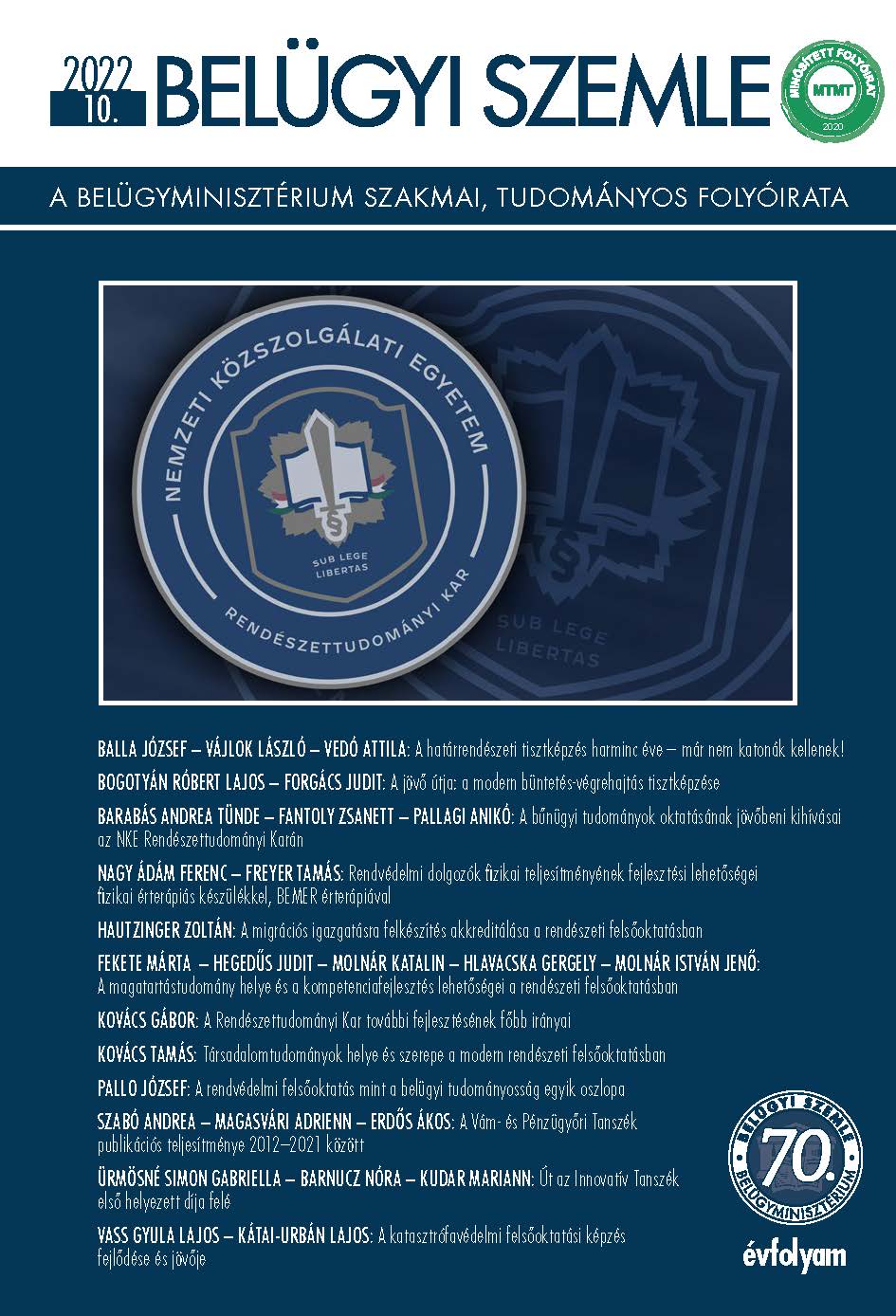Abstract
Aim: The paper depicts the development arc of the study of interior affairs, focusing on its last five decades, addressing its most important professional, educational, scientific and personal aspects. As a result, we will be able to put together a concise view of the tendencies that reach beyond societal structures to shape and influence the progress of interior science. This paper will also attempt to designate a pathway along which adherence to the future challenges of higher education would be possible, particularly so in the case of scientific endeavours aspiring for international audiences, which phenomenon is receiving an increasing focus.
Methodology: The paper will identify the most significant elements via a comparative-historical method, and will also address future challenges by offering suggestions coupled with an analytical evaluation, according to the standards of the international environment.
Findings: The development arc of home affairs-related scientific endeavours is relatively free of political overtones. The achievements of this branch were welcomed by the professionals who – through a pragmatic point of view – tried to utilize these findings. The National University of Public Service (and its predecessors, among others the Police College) through its work in the field of
education and science, has been one of the most significant supporting parties to those willing to engage in this field. The adaptability of law enforcement higher education is also concisely depicted by the international peers’ increasing awareness of the field, which is further emphasized by the essays published in certified foreign academic journals.
Value: In order to preserve the profile of profession-oriented law enforcement science, it is crucial to ensure that the professors of the future emerge from the professionals working in the field. One of the most important indicators of this long road is and adequate scientific and scientometric performance and research, the importance of which is further outlined in this paper.

